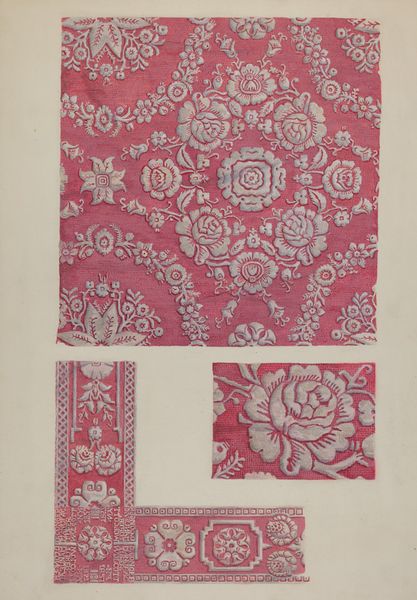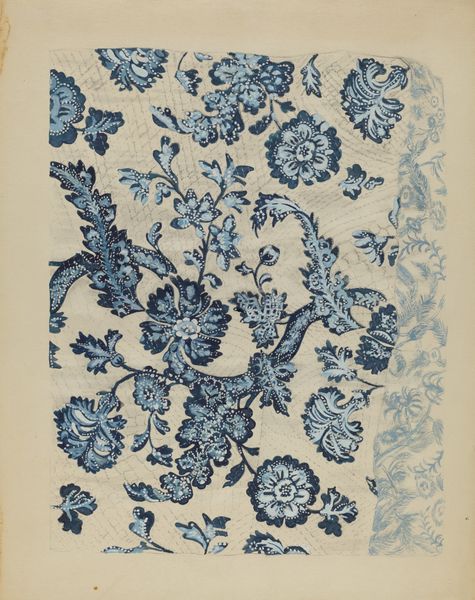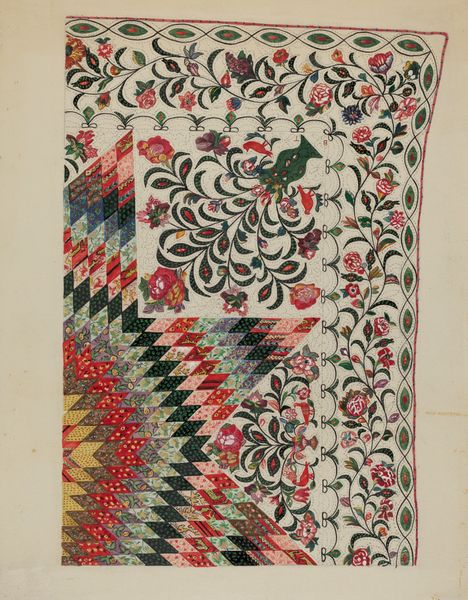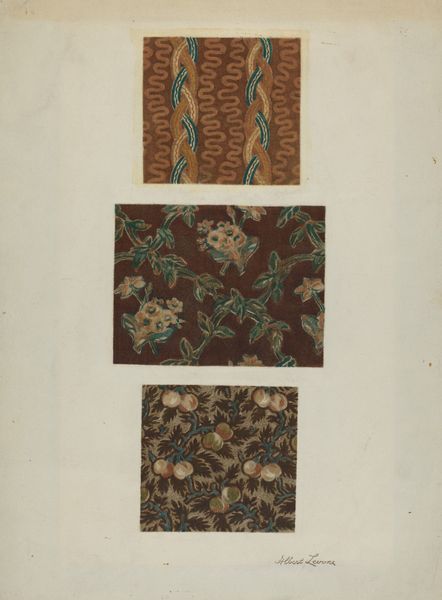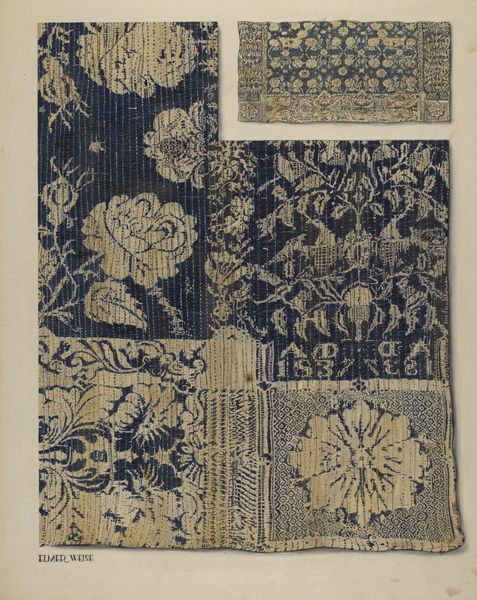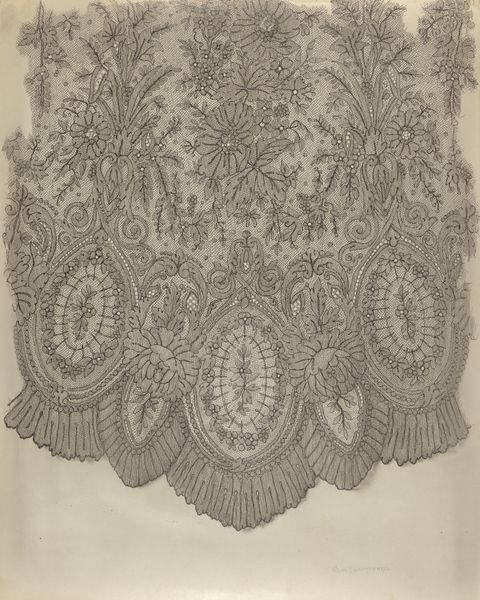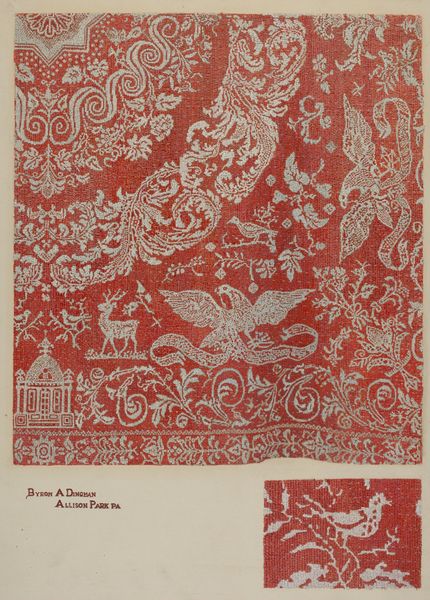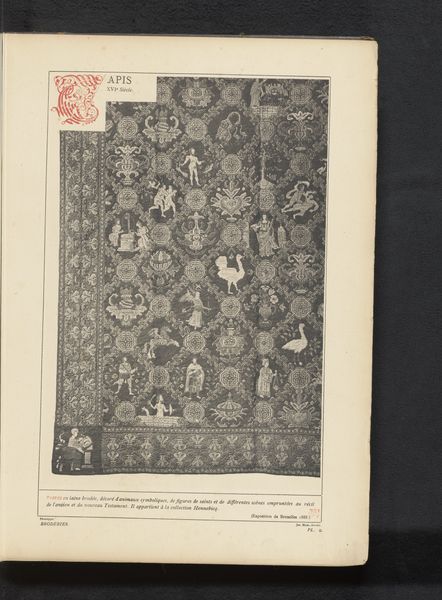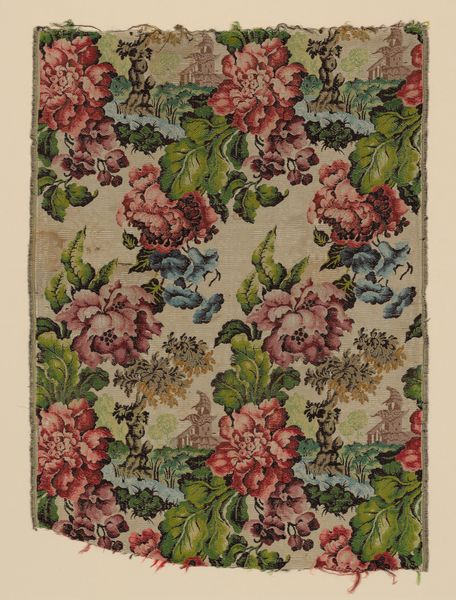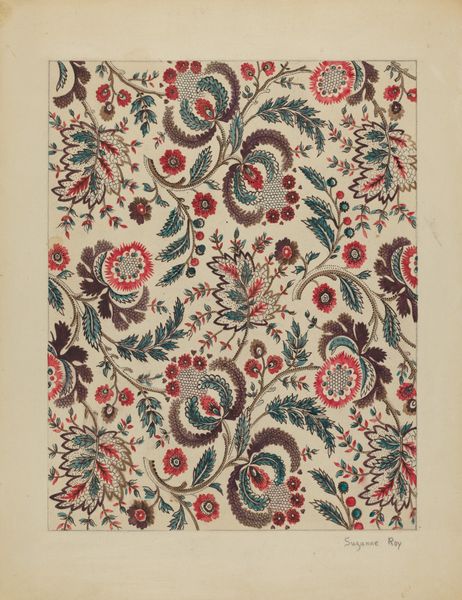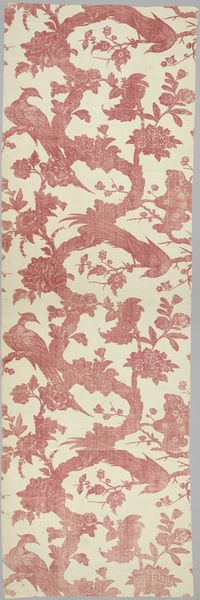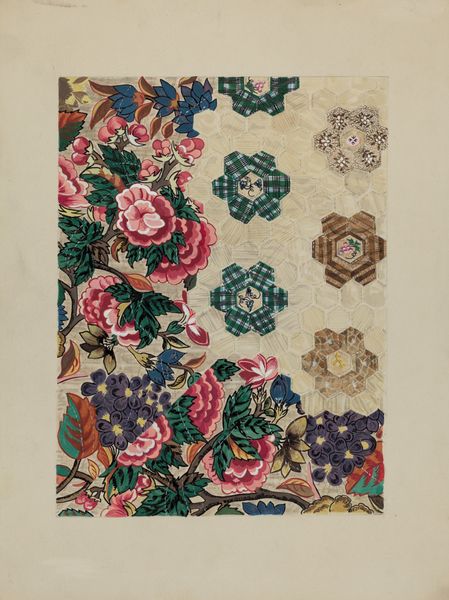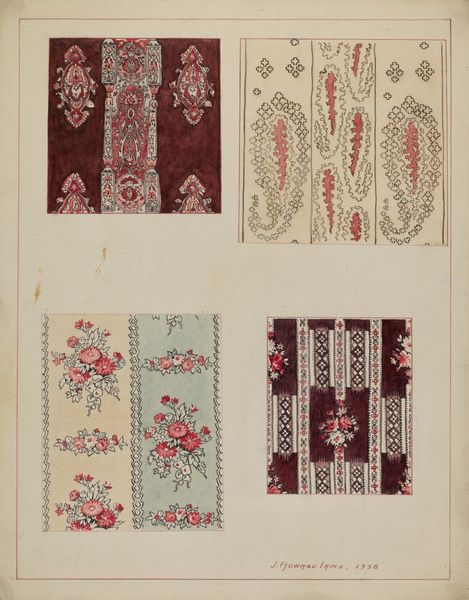
drawing, paper
#
drawing
#
paper
Dimensions: overall: 35.6 x 24.4 cm (14 x 9 5/8 in.) Original IAD Object: 2" square
Copyright: National Gallery of Art: CC0 1.0
Curator: Let’s explore “Textile Drapery,” created around 1937 by James H.C. Vail. It's a drawing on paper, showcasing a design for textile. Editor: Immediately, I’m struck by the muted palette. There is something inherently comforting and yet slightly melancholic about the patterns. It almost evokes the feel of antique wallpaper. Curator: It’s the tension between geometric structure and organic form that I find compelling. Observe how the recurring floral and foliate motifs create these undulating visual rhythms and echoes. And then, you see the color choice contributes a lot to its internal harmony and sense of closure. Editor: Exactly. This drawing evokes ideas of domesticity and gender roles from the 1930s. Textiles were not just functional items, they often embodied expressions of creativity, aspirations of prosperity, and a certain identity for families. The flowers speak to nature, growth, a softer image. I think there’s a fascinating narrative embedded in this composition. Curator: While I agree there are sociocultural elements to be examined, I urge us not to overlook the craftsmanship. Look at the repetition of forms. The intentional placement of these birdlike figures interspersed amongst the blooms... It’s quite masterful. The artist's semiotic choices are on full display and demonstrate intention. Editor: Yes, but intent and impact don’t always align! The artist may have approached this with noble intentions, but considering the historical context of gendered labor and domestic roles that involved such fabrics, one might argue that the composition—despite its beauty— reinforces existing societal norms that oppress. Curator: A valid, theoretical consideration. But it's possible, maybe even likely, to consider these things simultaneously. It could be that both of these arguments hold the potential to deepen the discussion of this singular object and provide a broader cultural view. Editor: I completely agree that art offers us a rich tableau for interdisciplinary discourse. It allows us to question conventions, unpack stories, and imagine more possibilities for freedom and equality. And a textile like this is deeply entwined with historical context and cultural connotations that need further study.
Comments
No comments
Be the first to comment and join the conversation on the ultimate creative platform.
